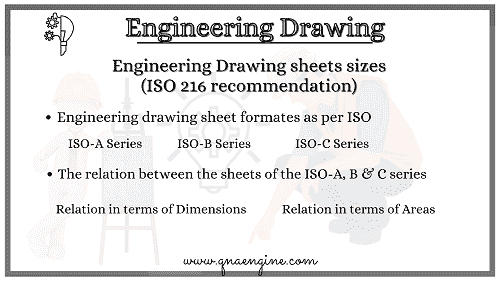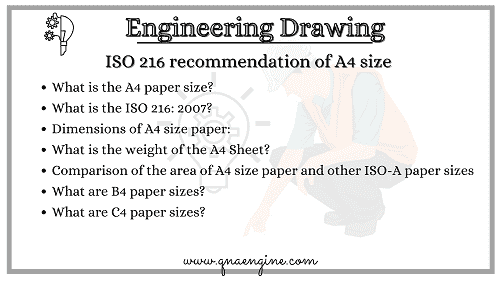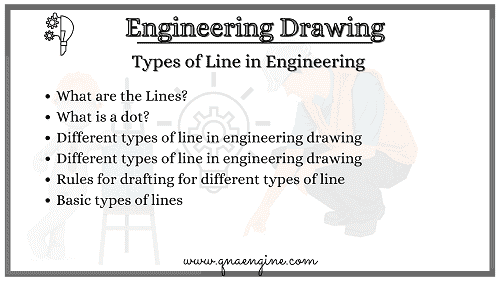General Assembly Drawings: The Ultimate Guide to Precision and Clarity in Engineering
When diving into the world of construction and engineering, you’ll often come across the term General Assembly Drawings. But what exactly are they, and why are they so important? Whether you’re a seasoned professional or just starting out, understanding these drawings is crucial. In this article, we’ll explore what General Assembly Drawings (GADs) are, why they matter, and how they fit into the larger picture of a construction project. We’ll also share some best practices to ensure your drawings are spot-on.
What Are General Assembly Drawings?
General assembly drawings, often abbreviated as GA drawings, are detailed illustrations that depict the overall layout and configuration of a project. These drawings provide a comprehensive view of how different components fit together within a structure or machine. They serve as a visual guide, ensuring that every part is correctly positioned and aligned.
In simpler terms, think of a general assembly drawing as a blueprint that shows the big picture. It’s like the box cover of a puzzle that shows how the final image should look once all the pieces are in place. Without this guide, assembling the project would be like trying to complete a puzzle without knowing what the final picture should be.
What Is the Purpose of General Assembly Drawings?
General Assembly Drawings (GADs) are detailed drawings that show how different components of a structure fit together. Imagine you’re building a giant jigsaw puzzle. The GAD is like the picture on the box, showing you how all the pieces come together to create the final image. In construction, these drawings provide a visual representation of the entire project, highlighting the relationships between various components.
These drawings are essential for ensuring that every part of the project aligns perfectly, minimizing errors and miscommunications. Without a clear GAD, teams might struggle to understand how different parts of a structure interact, leading to costly mistakes.
Why Are General Assembly Drawings Important in Construction?
General Assembly Drawings play a critical role in the construction process. They serve as the blueprint for the entire project, guiding workers and ensuring that everyone is on the same page. These drawings help to:
- Avoid Confusion: They provide a clear overview of the project, reducing the chances of miscommunication.
- Ensure Accuracy: By detailing how parts should fit together, GADs help prevent errors during construction.
- Facilitate Coordination: Different teams can use the GAD to coordinate their efforts, ensuring that everything comes together smoothly.
Do You Know?
General Assembly Drawings are often referred to as the “backbone” of a construction project because they provide the essential framework that guides the entire process.
What Makes General Assembly Drawings Unique?
Unlike other types of construction drawings, such as detailed part drawings or fabrication drawings, General Assembly Drawings focus on the big picture. While part drawings provide in-depth details about specific components, GADs show how these parts fit together within the larger structure. This makes GADs crucial for understanding the overall layout and flow of a project.
How Do General Assembly Drawings Differ from Other Types of Drawings?
1. Detail Drawings vs. GA Drawings
Detail drawings focus on individual components, providing in-depth information about a specific part. In contrast, general assembly drawings show how all the components fit together, providing a broader view of the project.
2. Working Drawings vs. GA Drawings
Working drawings provide detailed instructions for constructing or manufacturing a component. GA drawings, on the other hand, focus on the overall assembly, showing how different parts come together.
3. Schematic Drawings vs. GA Drawings
Schematic drawings represent the functional relationships between different components, often using symbols. General assembly drawings, however, provide a more detailed and realistic depiction of the components and their arrangement.
When Are General Assembly Drawings Typically Used?
GADs are usually created at the beginning of a project during the planning and design phases. They are then used throughout the construction process to ensure that everything is being built according to plan. Engineers, architects, and contractors rely on these drawings to guide their work, making them an essential part of any construction project.
Which Details Are Included in General Assembly Drawings?
A well-crafted General Assembly Drawing includes several key elements:
- Overall Dimensions: The size and scale of the entire structure.
- Component Locations: Where each part of the structure is located.
- Connections: How different components are connected to each other.
- Material Specifications: The types of materials used for different parts.
- Reference Numbers: Identification numbers for parts and components.
How Are Annotations Used in General Assembly Drawings?
Annotations in GADs are used to provide additional information, such as notes on specific parts or instructions for assembly. These annotations are crucial for ensuring that everyone understands how to read and interpret the drawing.
How Are General Assembly Drawings Created?
1. Collecting Detailed Information
Creating a general assembly drawing begins with gathering detailed information about the project. This includes measurements, specifications, and the positioning of each component. This data is essential for producing an accurate and comprehensive drawing.
2. Using CAD Software
Today, most general assembly drawings are created using computer-aided design (CAD) software. This technology allows for precise measurements and easy modifications. CAD software also enables engineers to create 3D models, providing a more detailed and accurate representation of the project.
3. Review and Approval
Once the drawing is complete, it undergoes a review process. This ensures that all details are correct and that the drawing accurately represents the project. After approval, the drawing is distributed to all relevant parties.
What Information Is Included in a General Assembly Drawing?
1. Component Identification
General assembly drawings include detailed information about each component in the project. This includes part numbers, names, and descriptions. This information is crucial for identifying and assembling the components correctly.
2. Dimensions and Tolerances
GA drawings also include precise measurements and tolerances. These details are essential for ensuring that each component fits together correctly and functions as intended.
3. Material Specifications
The drawing may also specify the materials used for each component. This information is vital for ensuring that the project meets the required standards and performs as expected.
4. Assembly Instructions
In some cases, general assembly drawings include step-by-step assembly instructions. These instructions guide the construction process, ensuring that components are assembled in the correct order and manner.
Do You Know?
Did you know that using general assembly drawings can reduce project delays by up to 30%? These drawings not only improve accuracy but also enhance communication among team members, leading to a more streamlined and efficient project. In fact, companies that consistently use GA drawings report fewer errors and reworks, saving both time and money.
What Are the Different Types of General Assembly Drawings?
1. Exploded View Drawings
Exploded view drawings show the components of a project separated from each other. This type of drawing is particularly useful for understanding the relationship between different parts and how they fit together. It’s like seeing the inside of a watch without taking it apart.
2. Sectional View Drawings
Sectional view drawings provide a cross-sectional view of the project. This type of drawing is essential for understanding the internal structure of a component or assembly. It’s like cutting a cake in half to see the layers inside.
3. Elevation Drawings
Elevation drawings depict the exterior view of a project from different angles. These drawings are commonly used in architectural projects to show the height, width, and depth of a building or structure.
4. Plan View Drawings
Plan view drawings provide a top-down view of the project. This type of drawing is useful for understanding the layout and positioning of components within a structure. It’s like looking at a floor plan for a house.
What Role Do GADs Play in the Planning Stage?
During the planning stage of a construction project, General Assembly Drawings provide a visual representation of the proposed structure. This allows project managers, engineers, and architects to:
- Visualize the Final Product: GADs give a clear picture of what the completed structure will look like.
- Identify Potential Issues: By seeing how all the parts fit together, teams can spot potential problems before construction begins.
- Coordinate Team Efforts: GADs help ensure that all teams are working toward the same goal.
How Can GADs Improve Decision-Making During Planning?
With a detailed GAD, decision-makers can make informed choices about materials, design changes, and construction methods. The clarity and detail provided by GADs allow for better communication between stakeholders, leading to more efficient and effective project planning.
Which Tools Are Commonly Used for Creating GADs?
Creating General Assembly Drawings requires specialized software that can handle the complexity of these detailed diagrams. Some of the most commonly used tools include:
- AutoCAD: A versatile software for creating 2D and 3D drawings.
- SolidWorks: Known for its powerful 3D modeling capabilities.
- Revit: Often used for building information modeling (BIM) and architectural design.
What Steps Are Involved in the Creation of a GAD?
The process of creating a General Assembly Drawing typically involves the following steps:
- Initial Design: Engineers and architects create a preliminary design of the structure.
- Detailing: The design is refined to include specific details about components, materials, and connections.
- Annotation: The drawing is annotated with notes, labels, and instructions.
- Review: The drawing is reviewed for accuracy and clarity.
- Finalization: The final version of the GAD is approved and distributed to the construction team.
Do You Know?
The creation of General Assembly Drawings has become significantly faster and more accurate with the advent of advanced CAD software, reducing errors and improving efficiency.
What Are the Do’s and Don’ts of Creating General Assembly Drawings?
Do’s:
- Do ensure accuracy: Double-check all measurements and specifications to avoid errors.
- Do use clear labeling: Make sure every component is clearly labeled and identified in the drawing.
- Do include all necessary information: Provide detailed information about materials, dimensions, and assembly instructions.
- Do involve all stakeholders: Ensure that everyone involved in the project has reviewed and approved the drawing.
Don’ts:
- Don’t rely solely on text: Use visuals to convey information wherever possible.
- Don’t overlook tolerances: Include precise tolerances to ensure that components fit together correctly.
- Don’t ignore revisions: Update the drawing as needed to reflect any changes in the project.
- Don’t rush the process: Take the time to create a comprehensive and accurate drawing.
Frequently Asked Questions (FAQs)
What is the purpose of a General Assembly Drawing?
A General Assembly Drawing’s primary purpose is to illustrate the arrangement of components in an assembly, providing valuable insights for precision manufacturing.
Can assembly drawings be used for quality control?
Absolutely! Assembly drawings play a vital role in quality control, ensuring that each component is correctly placed and assembled.
How often should assembly drawings be updated?
Assembly drawings should be updated whenever there are design changes or new revisions. Keeping them up-to-date ensures accuracy throughout the manufacturing process.
What are the essential software tools for creating assembly drawings?
Commonly used software tools for creating assembly drawings include AutoCAD, SolidWorks, and CATIA.
Are there any international standards for assembly drawings?
Yes, several international standards, such as ISO 128 and ASME Y14.100, govern the creation and presentation of assembly drawings.
Can assembly drawings be used for patent applications?
Indeed! Assembly drawings are instrumental in patent applications, providing detailed visual representations of innovative designs.
How can assembly drawings improve collaboration among teams?
Assembly drawings serve as a common language, facilitating seamless collaboration between design, engineering, and manufacturing teams.
Are there any limitations to assembly drawings?
While assembly drawings are highly effective, they may not fully capture dynamic movements or material properties, which could be addressed through supplementary documentation.
Can assembly drawings be used in reverse engineering?
Absolutely! Assembly drawings are instrumental in reverse engineering processes, helping engineers recreate products based on existing designs.
How do assembly drawings benefit manufacturing industries?
Assembly drawings optimize production processes, minimize errors, and enable precise manufacturing, ultimately benefiting industries by increasing efficiency and product quality.
Conclusion
General assembly drawings are more than just blueprints; they’re the backbone of any successful project. They ensure that every component fits perfectly, reducing errors and saving time. Whether you’re involved in construction, manufacturing, or engineering, understanding and utilizing GA drawings is essential for project success. By following best practices and paying attention to detail, you can create drawings that not only meet but exceed expectations.
Key Takeaways
- General assembly drawings provide a comprehensive view of how different components fit together in a project.
- These drawings are essential for ensuring accuracy, improving communication, and streamlining the assembly process.
- GA drawings include detailed information on component identification, dimensions, material specifications, and assembly instructions.
- There are various types of GA drawings, including exploded view, sectional view, elevation, and plan view drawings.
- Creating accurate and detailed GA drawings is crucial for project success, maintenance, and repairs.
By mastering the art of general assembly drawings, you can elevate the quality and efficiency of your projects, ensuring that every piece falls into place perfectly.



